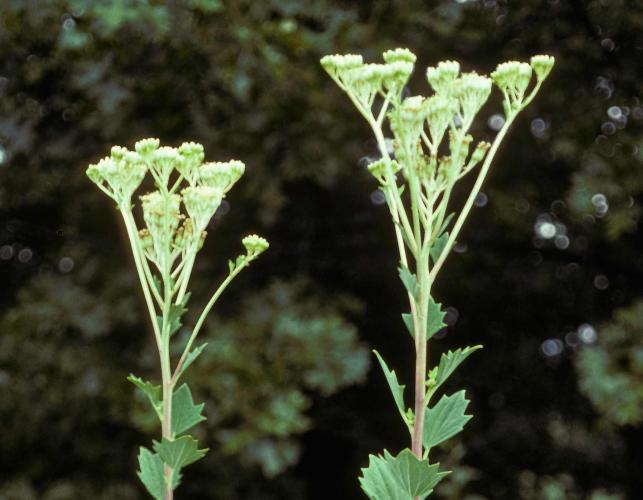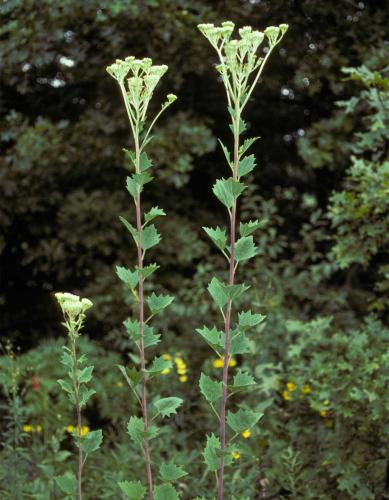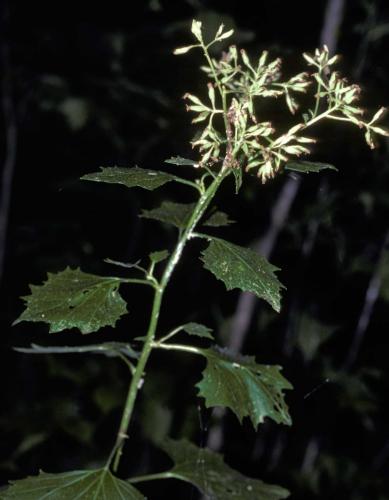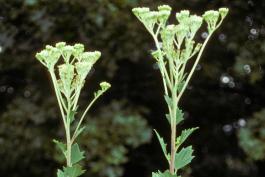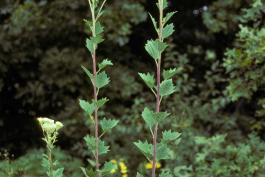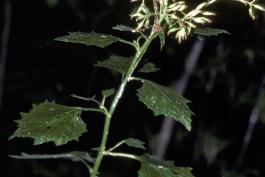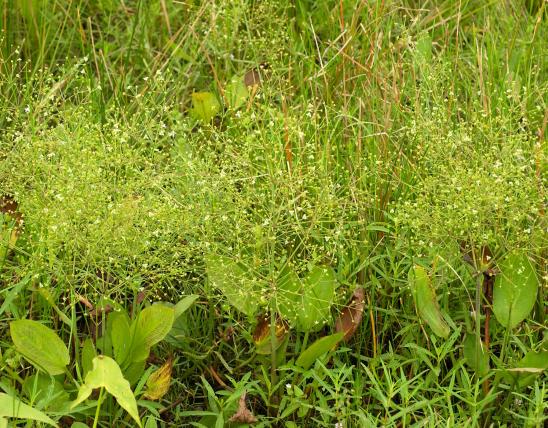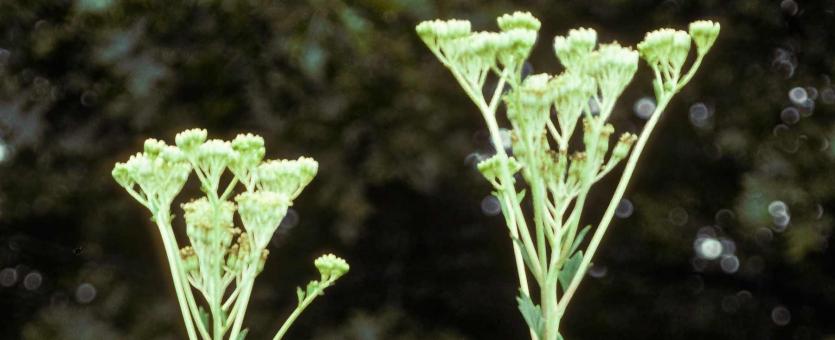
Perennial plant with a single stem, a silvery coating, widely spaced leaves, and a terminal, spreading inflorescence. Flowerheads in a flat-topped, loose corymb (the center flowers bloom first). White disk florets are surrounded by long, stiff green bracts. Blooms June–October. Leaves are pale green above, silvery white (glaucous) below. They stand out obliquely and are irregularly shaped with pointed lobes, the lower ones wider than long, to 6 inches wide. The leaves become smaller higher up the stem.
Height: usually to 5 feet, but can reach 8 feet.
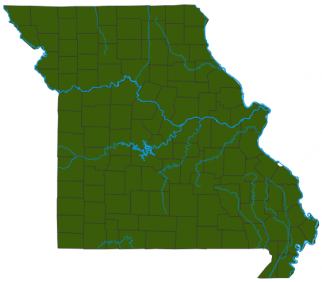
Statewide.
Habitat and Conservation
Occurs in low bottomland forests and upland woods, bases and ledges of bluffs, banks of streams and rivers, and pastures, roadsides, and railroads. This plant prefers shade in our area but is also a common prairie plant in Illinois and farther east.
Status
Pale Indian plantain is not in the plantain family, it is in the daisy or sunflower family. The word “Indian” in the common names of plants often essentially means “false,” designating a North American plant that somehow resembles an unrelated plant European settlers knew from the Old World. Exceptions are the names “Indian paintbrush” and “Indian pipe,” in which the plants were named for fancifully resembling objects used by Native Americans.
Human Connections
Botanists, many of whom love to garden themselves, have pointed out that this plant, with its interesting foliage, would make an attractive addition to the garden, but few nurseries are providing it.
Ecosystem Connections
Insects must cross-pollinate the flowers in order for viable seeds to be produced. Found throughout much of the eastern United States, this plant is rare enough in the state of New Jersey for it to have been declared endangered there.
